In the quest for effective solutions to climate change, biochar has emerged as a potent mitigation tool. The biochar production process transforms organic matter, which would otherwise decay and emit CO2, into a stable form of carbon. As a result, it offers a promising approach for long-term carbon dioxide removal (CDR). Beyond the climate impact, biochar can also enhance soil health, reduce pollution, conserve water, and provide other socio-economic benefits. These attributes make biochar an appealing choice for businesses seeking to balance decarbonization efforts with positive environmental and societal contributions. To help companies gain a comprehensive understanding of biochar, this guide will dive into biochar market insights and provide an overview of what is biochar and the biochar production process. It will also explore biochar uses and benefits, where to buy biochar, and how Cloverly can help.
Download the 7 Benefits of Carbon Credits white paper to learn how biochar carbon credits can boost your ESG strategy while improving your bottom line.
Biochar market overview
The biochar market is experiencing significant growth, with some pundits referring to it as “black gold.” Valued at USD $600 million in 2023, the global biochar market is projected to grow to nearly $3.5 billion by 2025. Its modern relevance in sequestering carbon emissions while providing additional benefits has made it compelling to businesses looking for ways to include carbon removal in their sustainability efforts. According to CDR.fyi, biochar carbon credits accounted for more than 90% of the durable carbon dioxide removal (CDR) credits delivered in the voluntary carbon market in 2023. Corporate buyers like Microsoft and JP Morgan Chase are ramping up their investment, signaling greater buyer confidence in the biochar carbon credit market. In fact, in Q1 2024 alone, Microsoft boosted its biochar investment by nearly 30% (129k metric tons) over its 2023 total investment (99.5k metric tons).
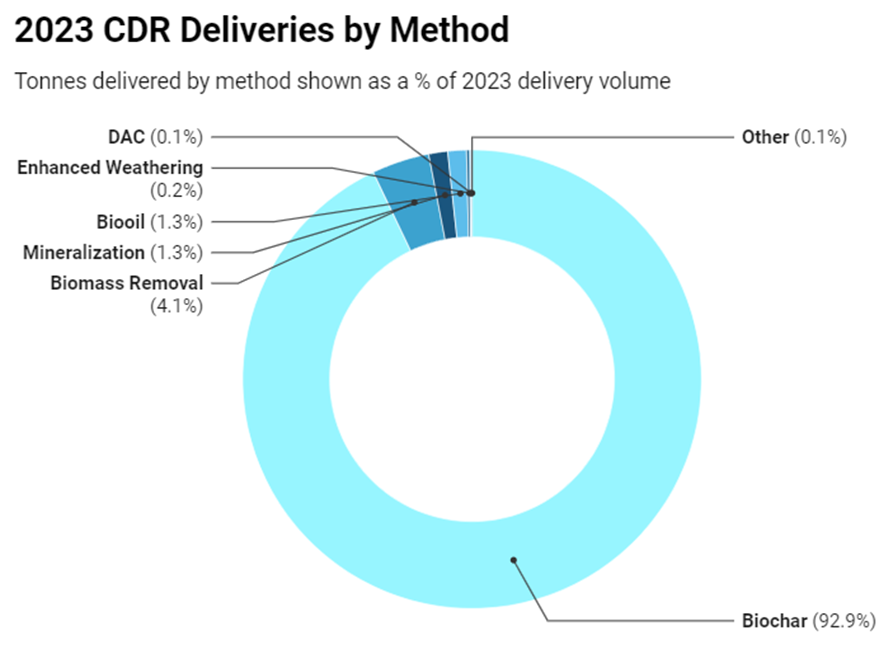
Source: CDR.fyi
Biochar market growth drivers:
The rapid growth in the biochar market is driven by several factors including:
- Elevated awareness of biochar benefits: Biochar can improve soil fertility, reduce water use, and sequester carbon, which are important environmental and agricultural benefits.
- Increased demand and investment: Strong demand for biochar carbon credits and physical biochar products is driving new investments in biochar companies and contributing to the sector’s rapid expansion.
- Biochar price: The average biochar price for 2023 was $131/metric ton, compared to $488/metric ton for all CDR approaches per CDR.fyi. This makes it an attractive option for companies looking to add durable carbon removal to their portfolio of carbon credits.
- Government support: A number of governments around the world are providing financial and regulatory support for the development and use of biochar.
As businesses strive to meet net zero targets and adhere to climate reporting requirements, the demand for biochar will likely continue to grow well into the future.
What is biochar?
Biochar is a charcoal-like substance made by burning organic matter in a low-oxygen environment. It’s produced through the process of pyrolysis, where organic material is heated at high temperatures in the absence of oxygen. This process transforms the material into a stable form of carbon, known as biochar, which resists decay and can store carbon for hundreds to thousands of years. The carbon in the biomass is prevented from returning to the atmosphere as CO2, making biochar a powerful agent against climate change. Beyond carbon removal, biochar offers several important co-benefits. These include improving soil quality and crop yields, reducing reliance on chemical fertilizers, removing pollutants from the air and water, and co-generating energy during the pyrolysis process.
How to make biochar: the biochar production process
The pyrolysis process used in biochar production drives off volatile gases and leaves behind a stable, carbon-rich solid. The properties of biochar can vary depending on the feedstock (the starting material) and pyrolysis conditions. For example, biochar made from wood is known for its high carbon content and ability to retain water, making it suitable for improving soil moisture retention in arid regions. On the other hand, biochar made from agricultural waste, such as rice husks or sugarcane, may have higher nutrient content, making it useful for replenishing nutrient-depleted soils. The following infographic illustrates the biochar production process using different feedstocks.
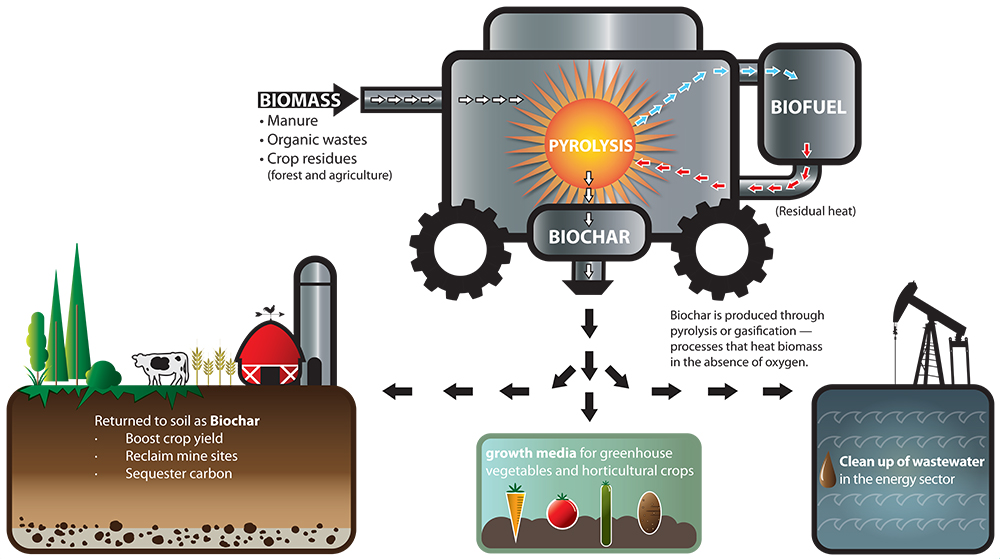
The biochar production process (how to make biochar), potential feedstocks, and biochar uses. Source: the Alberta Biochar Initiative via ESE magazine.
Biochar feedstocks
The chart below shows the various types of feedstocks that are used in biochar production across different regions. Forestry residues are the most common in all regions except Asia and Africa, where agricultural residues are more common.
Biochar Feedstock by Region
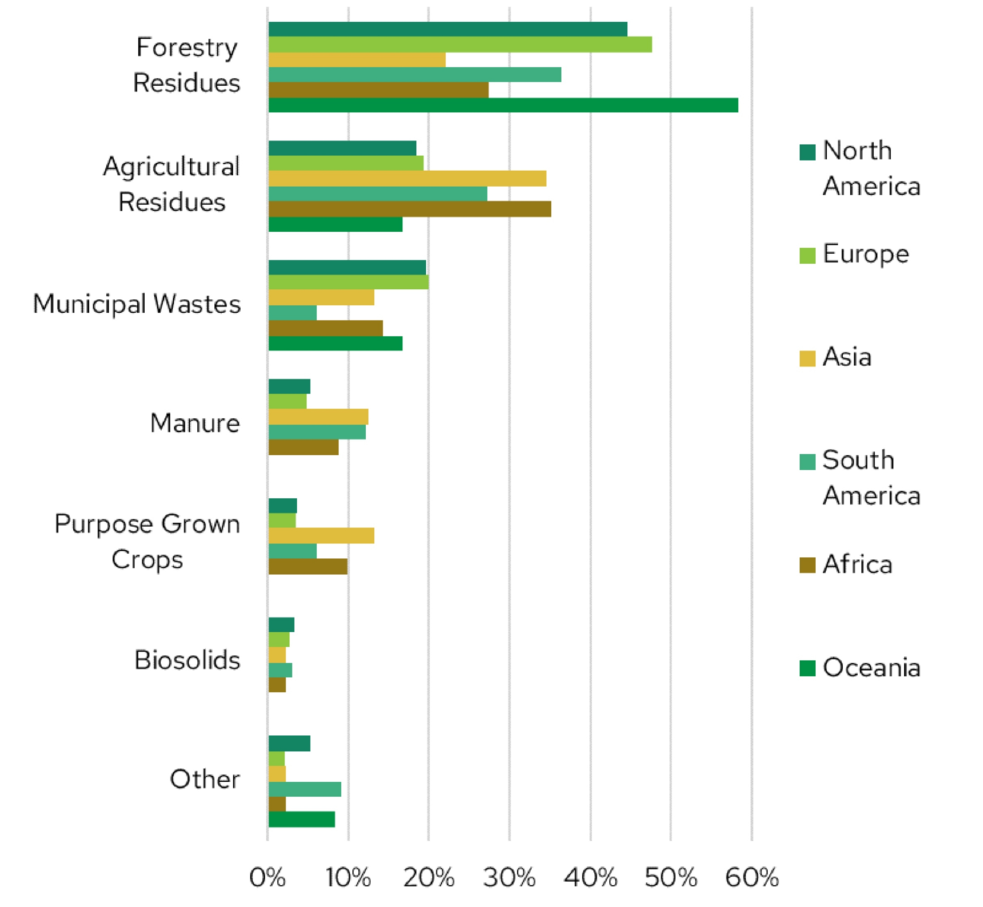
Note: Feedstock sources among biochar producers in global regions. Data represent percent of producers in each region that use each feedstock type. Some producers reported using multiple feedstock types, so the total values are greater than 100% for each global region. Source: 2023 Global Biochar Market Report.
Here are some examples of different feedstocks that Cloverly suppliers use in biochar production:
- Douglas County Forest Products utilizes waste wood chips and sawdust to create high-quality biochar, demonstrating the potential of transforming waste into a valuable resource.
- Pyrocal harnesses the power of pyrolysis to transform macadamia and pecan nut shells into biochar, a process that encapsulates CO2 within a stable product for centuries. This initiative exemplifies a circular economy, utilizing local feedstock to create a valuable product while minimizing waste.

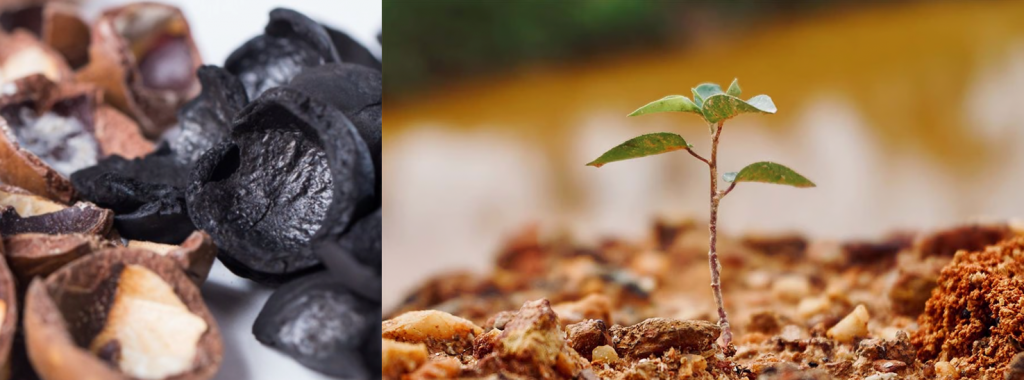
Nut shells feedstock used in biochar production. Source = Pyrocal
These are just a few examples, and the biochar production landscape is constantly evolving. As the demand for biochar increases, we can expect to see even more innovative and sustainable production methods emerge.
Biochar uses and benefits
Biochar in agriculture:
One of the primary uses of biochar is in agriculture. By incorporating biochar into agricultural soils, farmers can enhance soil fertility, improve water retention, and increase microbial activity and nutrient availability. This leads to healthier soils, higher crop yields, and reduced dependence on chemical fertilizers and irrigation water. One study found that utilizing biochar in pistachio orchards generated an added value of $239 value per metric ton of biochar with a return on investment after just two years. Wine grapes and almonds showed similar added value of $163 and $125 per metric ton of biochar applied respectively. Biochar also helps mitigate greenhouse gas emissions from soils and reduces nutrient runoff into water bodies, benefiting both the environment and agricultural productivity.
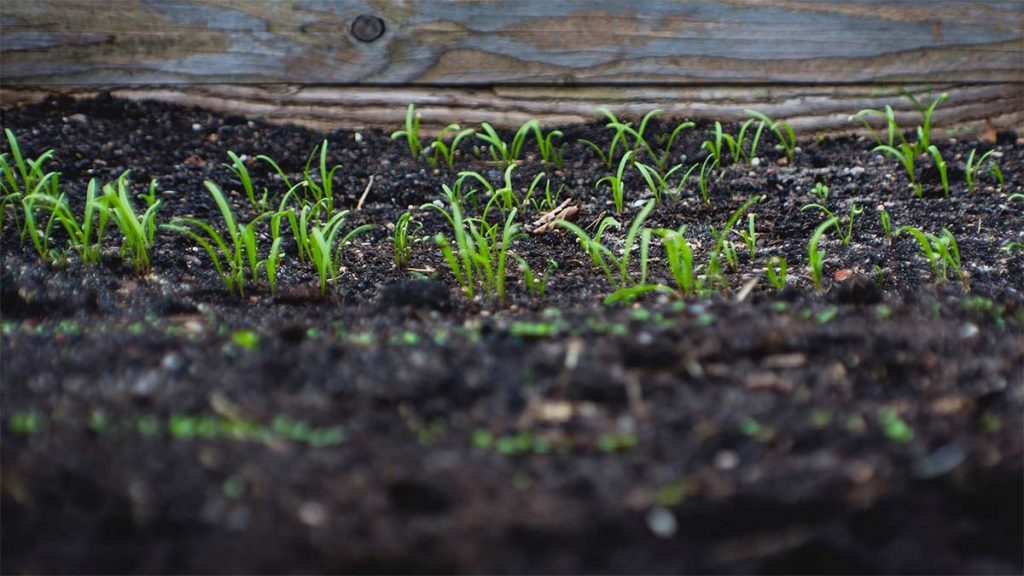
Biochar in urban landscapes:
Biochar is equally beneficial in urban landscapes for improving soil structure, moisture retention, and nutrient supply. In addition to its soil-enhancing properties, biochar can also help mitigate the effects of urban heat islands. Its high porosity allows for increased air circulation and water retention, leading to cooler and more comfortable outdoor spaces. Biochar can also play a valuable role in green infrastructure solutions such as bio-retention areas and green roofs. Finally, biochar can be used to remove pollutants from the air, improving urban air quality.
Biochar in water treatment and environmental remediation:
Other biochar applications that are gaining attention include water treatment and environmental remediation. Due to its porous structure and high absorption capacity, biochar is an effective medium for water filtration and purification. It can remove contaminants such as heavy metals, pesticides, and organic pollutants, making it a valuable tool for businesses involved in water treatment processes. Biochar has also shown potential in environmental remediation efforts, such as the restoration of degraded lands, mine site rehabilitation, and brownfield reclamation. Its ability to improve soil quality and sequester contaminants makes it a valuable tool for restoring ecosystems impacted by human activities.
Biochar industrial applications:
Biochar has expanded beyond agricultural applications and is finding its way into industrial sectors. For example, biochar can be used as a renewable energy source, providing heat and power through combustion processes. Additionally, biochar’s unique physical and chemical properties make it an attractive material for various industrial processes, such as water filtration, construction materials, and even carbon capture and storage technologies. Here are a few industrial applications for biochar:
- Construction: Biochar can be used as an additive in building materials such as concrete, brick, and insulation. Incorporating biochar into these products improves their durability, enhances insulation properties, and reduces their carbon footprint.
- Energy and electronics: Biochar is used in batteries, particularly lithium-ion, due to its high surface area and electrical conductivity. It can also serve as a catalyst or support material in the production of graphene.
- Waste treatment: As a sorbent, biochar can be instrumental in treating wastewater, such as sewage, effectively removing pollutants and heavy metals.
- Waste management: By converting organic waste streams into valuable products, biochar facilitates circular economy principles. This helps businesses manage their waste streams more efficiently, reduces waste disposal costs, and creates new revenues streams.

Biochar uses as building materials. Source = Novocarbo
Biochar carbon credits:
Biochar carbon credits are gaining traction among businesses for their dual capacity to combat climate change and deliver wide-ranging socio-economic benefits. This has spurred market growth, with companies such as Microsoft and JP Morgan investing in biochar projects as part of their climate action strategies. With the price of biochar carbon credits reaching $131/metric ton in 2023, the economic opportunity for those engaged in their production and sale is significant. This momentum also reflects a growing acknowledgment of biochar carbon credits as viable elements of effective corporate climate strategies.
How to buy biochar: where to buy biochar
Businesses seeking to buy biochar or biochar carbon credits should look at some key considerations as not all biochar is created equal.
Source and quality of biochar: Feedstocks should stem from sustainably sourced or waste biomass, emphasizing the importance of supporting a circular economy. The biochar must meet high quality and sustainability standards, with certifications such as those from the International Biochar Initiative (IBI) or the European Biochar Certificate (EBC) serving as indicators of such quality.
Carbon sequestration potential: Biochar products should have their carbon sequestration claims verified by third parties. This ensures the biochar actually delivers the promised climate benefits, with durability and sequestration timelines aligning with the company’s long-term climate goals.
Evaluating the supplier’s reputation and expertise: This involves choosing suppliers with a strong track record in producing high-quality biochar and a commitment to sustainability. Suppliers who offer comprehensive technical support in the application and integration of biochar can be particularly valuable for companies venturing into this space.
Cost-effectiveness and scalability: Integrating biochar into climate strategies needs careful financial analysis. This involves considering the purchase costs, potential returns on investment, and the availability of biochar carbon credits, alongside ensuring the supplier can meet demand at scale.
Regulatory and market considerations: Ensure compliance with local and international environmental regulations. Companies should also consider any tax considerations or incentives related to buying or selling biochar carbon credits.
Cloverly can help you find high-quality options — and we do the vetting for you. Here are some of the key players in the biochar market, all available through Cloverly:
- Pyrocal transforms macadamia and pecan nutshells into biochar, a process that encapsulates CO2 within a stable, granular product for centuries. This initiative, rooted in a circular economy and utilizing local feedstock, results in biochar with over 80% carbon content, making it an exemplary carbon removal technology. Pyrocal’s biochar, intended for agricultural and urban applications, not only improves soil quality by enhancing nutrient and water retention but also offers a greener alternative to traditional fertilizers. The company’s commitment to sustainability is further underscored by its production capability, with each of its systems generating 4,350 carbon removal credits annually, reflecting a significant contribution to the global carbon sequestration effort.
- Premier Forest Products transforms wood waste into carbon-dense biochar bricks through pyrolysis, a process that aligns with the Puro.earth biochar methodology. Operated out of South Wales in the UK, the project achieves a remarkable feat by sequestering 2.96 tons of CO2 for every ton of biochar produced. The biochar, primarily supplied to compost producers, plays a crucial role in soil health by improving nutrient absorption, increasing water retention, and minimizing nutrient runoff into waterways. Initially marketed as a fuel source, the biochar bricks have evolved into a pivotal soil amendment product, presenting a sustainable solution to the challenges of wood waste management and offering substantial environmental benefits.
- Lucrat Biochar Developed in collaboration with prestigious German institutions, Lucrat’s biochar varieties cater to diverse uses, including animal feed and biogas decarbonization. Their approach, certified by Puro.earth’s methodology and in partnership with the European Biochar Consortium, allows for the innovative use of biochar in insetting industrial value chains. Lucrat’s biochar stands out for its dual functionality: it not only sequesters carbon for millennia but also substitutes materials with high emission profiles, prevents methane release, and serves as a nutrient store.
- Novocarbo works with certified biomass producers to produce stable biochar in production facilities throughout Germany. All equipment is powered by local renewable sources with excess heat and energy, which is fed back to the grid. In addition to agricultural applications, the company is developing a variety of composite materials for large-scale industrial applications, starting with the building materials and construction industry. The biochar complies with the European Biochar Consortium standard.
How Cloverly can help
Biochar is a versatile solution to environmental challenges, offering benefits for soil, air, water, and more. As businesses seek sustainable practices, biochar stands out for its ability to address climate change and provide additional advantages. Cloverly is dedicated to facilitating the adoption of biochar and connecting businesses with impactful projects. By leveraging Cloverly’s expertise, companies can integrate biochar into their climate strategies, contributing to progress toward decarbonization goals while fostering ecological and economic resilience. Whether you are a biochar carbon credit supplier or looking to buy biochar carbon credits, reach out to Cloverly today to see how we can assist you.
To learn more about how biochar carbon credits can help you achieve your climate and business goals, download the 7 Benefits of Carbon Credits white paper.





